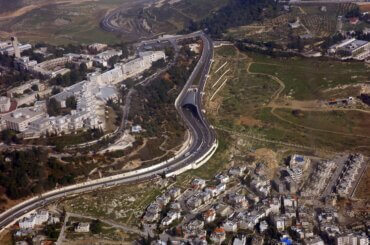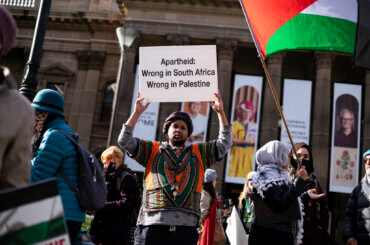1. The Jewish holiday of Hanukkah, a Hebrew word meaning “to dedicate,” is a minor Jewish festival with no Biblical source.
2. Hanukkah is a historical holiday that commemorates the Jewish defeat of the Seleucidite Syrian Greeks in 165 BCE by a priestly family called the Maccabees. These Maccabees sought to defeat not merely the Greek occupiers, but to defeat their Jewish acolytes, the so-called “Jewish Hellenizers.”
3. Our rabbinic sources have not preserved any legitimate historical information for us. But the rabbis do set out the legal requirement of the holiday, a single prescription to light candles for eight nights, in the Tractate Shabbat of the Babylonian Talmud. This legal discussion, our only “official” Jewish source for the holiday, is in essence appended to a much larger discussion of the intricacies of lighting candles for the Sabbath.
4. Our historical source for the holiday is the apocryphal Book of Maccabees 4:52 ff. where we read of the Maccabean rededication of the Temple on 25 Kislev, the traditional date of Hanukkah.
5. The rabbis who canonized the Hebrew Scriptures at Yavneh circa 100 CE neglected to include the Book of Maccabees in their Bible. There are many ways that we might speculate on this excision of the Maccabees from the Masoretic Bible.
6. The rabbis saw the Hasmonean dynasty as usurpers to the Priestly offices in the Temple and the monarchy. The Hasmoneans were country priests who did not come from the Zadokite lineage and took it upon themselves to lead the rebellion against Antiochus and the Syrian Greeks. From the rabbinic point of view, whatever positive gains were gained by this defeat of the Seleucids was negated in the very strict literal sense of Jewish law regarding priestly succession as elucidated in the rabbinic sources.
7. We can then examine the Hasmonean lineage and its impact on the Jewish culture in Pharisaic and post-Pharisaic Judaism. The first Hasmoneans by and large stayed true to the Jewish legal traditions along the rabbinic model. But as the generations went on, the Hasmoneans continued to garner more and more power and forgot the traditions that stirred the rebellion in the first place. At the nadir of Hasmonean power, the usurpation of the throne by the Idumean pretender Herod, who was technically a member of the Hasmonean clan as he married into the family, capped off what was by then many decades of Hellenization by the Temple priests.
8. So it should be noted that the rabbis were less than thrilled with the physical specimens of the Hasmonean dynasty who populated the Temple precincts in their own day. It would then make sense for the rabbis to seek to expunge the historical record of the Maccabean revolt and the reasons for the celebration of the Hanukkah holiday.
9. But the rabbis could not eliminate a holiday which had popular roots among both the Jewish masses and the priestly elite. Hence, they developed a hagiographic tale of a cruse of oil that was found amidst the Temple relics that was the only “pure” oil that could be used to light the Menorah, Hebrew candelabrum; according to the rabbis the oil, a one-day supply, lasted for the eight-day rededication ceremonies. It is curious to note that the Temple Menorah contained seven branches while the Hanukkah Menorah contains nine.
10. The story of the cruse of oil knowingly obscured the historical underpinnings of the holiday which, in addition to the Book of Maccabees sources, appears in Josephus’ Jewish Antiquities Book 12, Chapter 7. Our historical sources tell us nothing about the cruse of oil but do tell us a good deal about the Maccabees and their war against the Syrians.
11. The rabbis, as is known, were split over their own thoughts and desires about Jewish national independence. There was a faction led by R. Akiba that continued to struggle for Jewish independence while another group, led by R. Yohanan Ben Zakkai, sought to make peace with the occupiers and develop a new Jewish national life based upon study and practice of the written and oral traditions of the Hebrew faith. According to this model the Jews would live at peace with the Romans in exchange for their religious freedom and communal autonomy.
12. The Hanukkah commemoration, a clearly nationalistic holiday, a holiday that was more political than spiritual, was muted within the rabbinic liturgical calendar. The rabbis were deeply concerned with the restoration by the Maccabees of Torah study rather than political independence. The rabbinic Hanukkah is a contemplative holiday that highlights the warmth of family ties and the freedom afforded by the Maccabean revolt for Jews to live in religious freedom.
13. With the dual emergence of new trends in the modern period; Jewish nationalism in the form of Zionism and the increased attention paid by Jews to Gentile-like behaviors and assimilation, the holiday of Hanukkah, a relatively minor part of the Jewish liturgical calendar as we have said, takes on a newly significant role.
14. For the Zionists, the Maccabean revolution was an alternative historical model to the standard narrative of the rabbis. In the Macabees, the Zionists found a valid historical model on which to base their own Judean nationalism. Rather than maintaining the codes and beliefs of the Talmudic sages, the Zionists re-formed a “new” Jewish “nation” upon “invented traditions” that were deeply informed by the Maccabean paradigm.
15. In the Zionist narrative the Hellenizing Maccabees were expunged and the Nationalist Maccabees were valorized. The movement which led to Herod and the eventual destruction of the Jerusalem Temple in 70 CE was blanked out, as was the paradigm shift of R. Yohanan Ben Zakkai and the emergence of a new humanistic Judaism based upon the collection of the source traditions during this period of the written and oral traditions in the forms of the Masoretic Scriptures and the Mishnah, leading to the magnum opus of this rabbinic formalism, the Babylonian Talmud.
16. Zionism saw itself as heir to the Maccabeean revolution and not to the rabbis. The quietism of the rabbis was eliminated in favor of a new aggressiveness that thought little of the religious and cultural implications of this realignment of Jewish life. Zionism was an attempt to restore national life to the Jews at the expense of the religious imperatives developed in the Diaspora by the Jewish Sages.
17. The increasing level of assimilation by Jews into Gentile society has made Hanukkah a holiday meant to match up against Christmas, a central Christian holiday that forms, with New Year’s Day, the very core of Christian self-definition. Over the past century, Christmas has taken on mammoth proportions and has served to drive the engine of modern Western consumerism.
18. Thus, Jews who felt ill at ease with their own faith turned to Hanukkah as a “twin” holiday to stand up next to Christmas.
19. So, in summation, Hanukkah is a very minor Jewish holiday that has been obscured by the way in which Judaism has used the historical source materials and by the manner in which the Jewish rabbis sought to impress their own stamp upon the conceptualization of the holiday. Modern Jews have reframed the holiday and have given it new meanings not originally inherent in either the historical or the religious sense(s) of the commemoration transforming Hanukkah into a “major” Jewish holiday.


